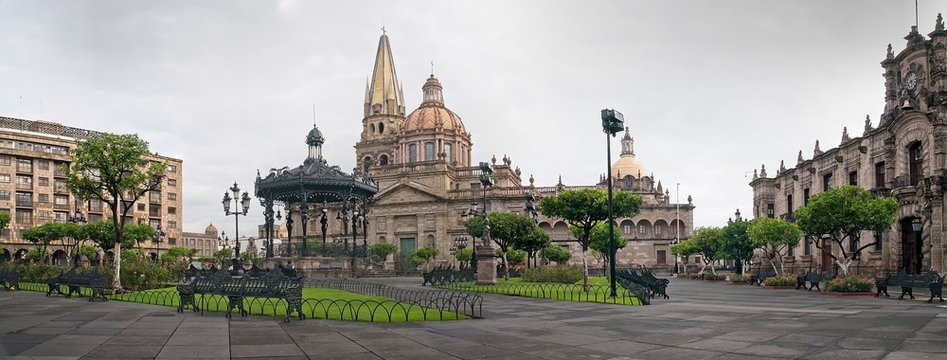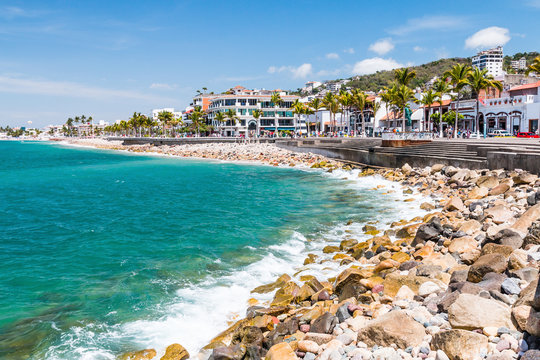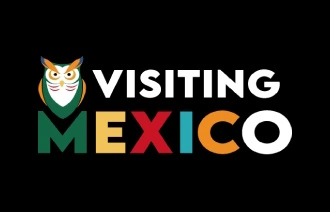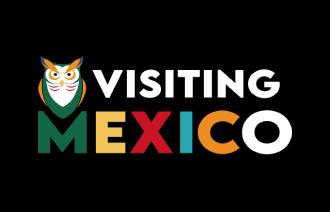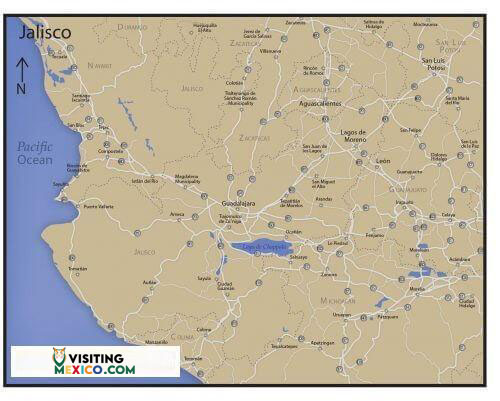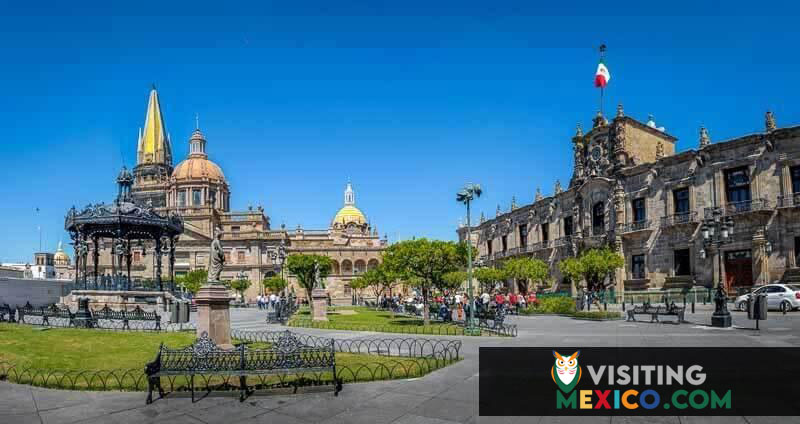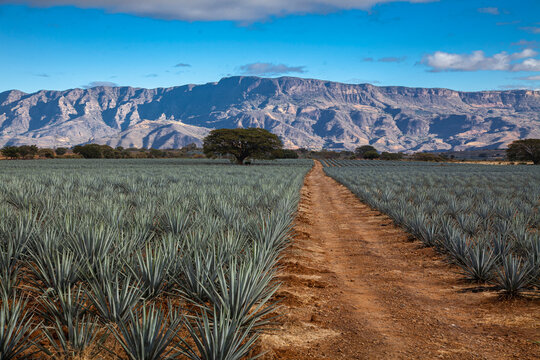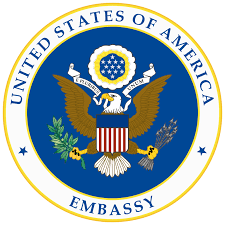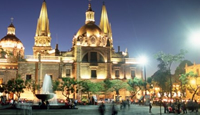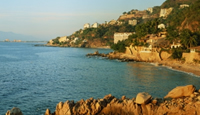IMPORTANT FACTS ON JALISCO
Admitted as a Mexican state in 1823, Jalisco fills nearly 31,000 square miles. With a population of 7,459,528, the state is one of Mexico’s most crowded. Notably, the urban region of Guadalajara is second only in terms of population to Mexico City. As such, the capital claims a pulsing economy based on manufacturing and information technology. Consequently, many foreign corporations and firms settled in Guadalajara.
GEOGRAPHY AND LANDSCAPE OF JALISCO
With its beaches, tropical forests, temperate forests, lakes, and plains, Jalisco also lies on the Trans-Mexican Volcanic Belt. Among the ecosystems of the state are cloud forests and mangroves. There are protected beaches for marine turtles and savannas that slope toward the ocean. Jalisco’s various rivers and streams head primarily to the Pacific. Lake Chapala, the largest lake in the country, is located in Jalisco as well as Michoacán. Wildlife includes such animals as armadillo, ocelot, iguana, rattlesnake, coral snake, parrot, and many other species. The waters off the coast maintain snapper, wahoo, crab, lobster, octopus, and sea bass.
HISTORY OF JALISCO
According to archeologists, people arrived in Jalisco nearly 15,000 years ago. The pre-Columbian period in western Mexico witnessed its first settlements in the Jalisco region. The earliest settlement to reach city proportions was at Ixtepete, which continues to impress historians with its tombs. Meat lured many groups into the area around the tenth century A.D. Tribes like the Cuyutlan and Coco left considerable evidence behind regarding their culture and civilization.
Artifacts also reflect the influence of the Toltec and Teotihuacan peoples. The P’urhepecha became the dominant group of the region by the early fourteenth century. Jalisco’s colonial period began not long after the Aztec conquest. Cortes sent explorers into the area by 1522. The Spanish used brutal force to subdue local populations, but there were many uprisings throughout the colonial era as elsewhere in Mexico.
Guadalajara was founded in 1542 and increased in importance over time as a trade center. The city imported goods from the coast and made them available for other areas of the country. During the War for Independence, Jalisco was the site of various battles and was a significant battleground area during the Mexican Revolution. Today, the state is rich in history, culture, and a prosperous economy.

This business-friendly city is the 10th largest in Latin America. As a result, many companies from across the world have invested in the city’s economy. Cultural attractions and historical landmarks dot the cityscape. For example, the historic downtown is a picturesque area filled with the city’s oldest structures. Also, the city is famous for its beautiful parks.
Among Jalisco’s most popular sites are the Guadalajara Cathedral, and the Jalisco Regional Museum. In addition, the Plaza Tapatia, Plaza de Armas, and the Palace of Justice are must-sees. Monuments of historical and cultural significance are in various areas of the city. Also, world-class hotels and restaurants are in this exciting capital city.
TOURISM IN JALISCO
The state’s most popular tourist centers include the capital, Puerto Vallarta, Lake Chapala, and the mountain regions. The town of Tequila also attracts many visitors. Puerto Vallarta is considered a resort town, situated on Banderas Bay.

GUADALAJARA - A CITY OF CHARM AND HERITAGE
Guadalajara, Jalisco’s capital, is a bustling cultural hub that beautifully marries old-world charm with modern vibrancy.
- Stroll through Plaza Tapatía, surrounded by colonial architecture and striking fountains.
- Discover the Instituto Cultural Cabañas, a UNESCO World Heritage site, showcasing murals by José Clemente Orozco.
- Teatro Degollado and the majestic Catedral de Guadalajara will take you back in time while modern cafes, shopping districts, and trendy neighborhoods like Tlaquepaque keep things exciting.
- Enjoy Mariachi music at its birthplace – every corner of this city hums with the rhythm of Mexico’s heart!
PUERTO VALLARTA
Looking for a tropical paradise? Puerto Vallarta is your ideal escape!
- Relax on golden beaches and soak up the sun on Banderas Bay.
- Enjoy exhilarating water activities like whale watching, snorkeling, or sailing.
- Take a walk down the Malecon, an oceanfront promenade lined with vibrant art, sculptures, and breathtaking views.
- Don’t miss a sunset cruise, where the sky and ocean blend in spectacular shades of orange and pink – a memory you’ll carry forever.
- For the adventurous, the Bucerías beach or Yelapa town, accessible only by boat, offer a perfect mix of local charm and tranquility.
TEQUILA - THE HOME OF THE FAMOUS DRINK
Jalisco is the birthplace of Tequila—and no trip is complete without visiting the iconic town of Tequila.
- Tour agave fields and learn about the 400-year-old tradition of tequila-making, with visits to iconic distilleries like Tequila Herradura and Jose Cuervo.
- Experience the Tequila Express, a fun, historic train ride to the heart of the region’s distilleries, with mariachi bands playing along the way!
- Be sure to taste some of the finest tequila in its natural habitat – enjoy a guided tasting session and immerse yourself in the history and craft of this famous drink.
- While you’re in Tequila, explore La Ruta del Tequila, a scenic route through charming towns and lush landscapes, where you can learn, sip, and appreciate tequila at its finest.
LAKE CHAPALA - PEACEFUL RETREAT AMIDST NATURE
Lake Chapala, Mexico’s largest freshwater lake, is an oasis of tranquility nestled between majestic mountains.
- Take a boat ride on the serene lake and admire the breathtaking views of the Sierra Madre Mountains.
- Lake Chapala is also a haven for birdwatching enthusiasts, as it’s home to diverse species of birds.
MORE THINGS TO SEE AND DO IN JALISCO
- Ciudad Guzman: South of Guadalajara, Ciudad Guzman is home of the Zapotlan people. The city is nicknamed the “Athens of Jalisco” for its artist population.
- Ajijic: This village is on the northern shore of Lake Chapala. A serene and relaxed landscape that counters the vibrancy and crowds of Puerto Vallarta. Below are photos from our trip (Charles Lundy) in Ajijic 2016. See our article on Ajijic here which includes a street map.
- Marietas Islands: A popular day-trip from Puerto Vallarta. These Pacific islands offer great snorkeling, scuba diving, and kayaking experiences.
- Museum of Huichol Indian Handicrafts: This Guadalajara museum is a popular tourist destination and cultural venue with artifacts and handicrafts of Huichol.
- Tequila Express: This train ride is a luxury tour from Guadalajara to the town of Tequila. It features enchanting scenic views until it reaches an old hacienda that showcases the traditional tequila-making process.
- Liberty Market: Promoted as the largest covered market in Latin America, this Guadalajara venue is a must-see. This market has it all..
- Barranca de Huentitan: This region is north of the capital. The landscape attracts backpackers, hikers, and campers to find its natural beauty.
- International Mariachi Festival: This event draws a huge audience to honor the arts, culture, and music of the state
Plan a trip to Jalisco
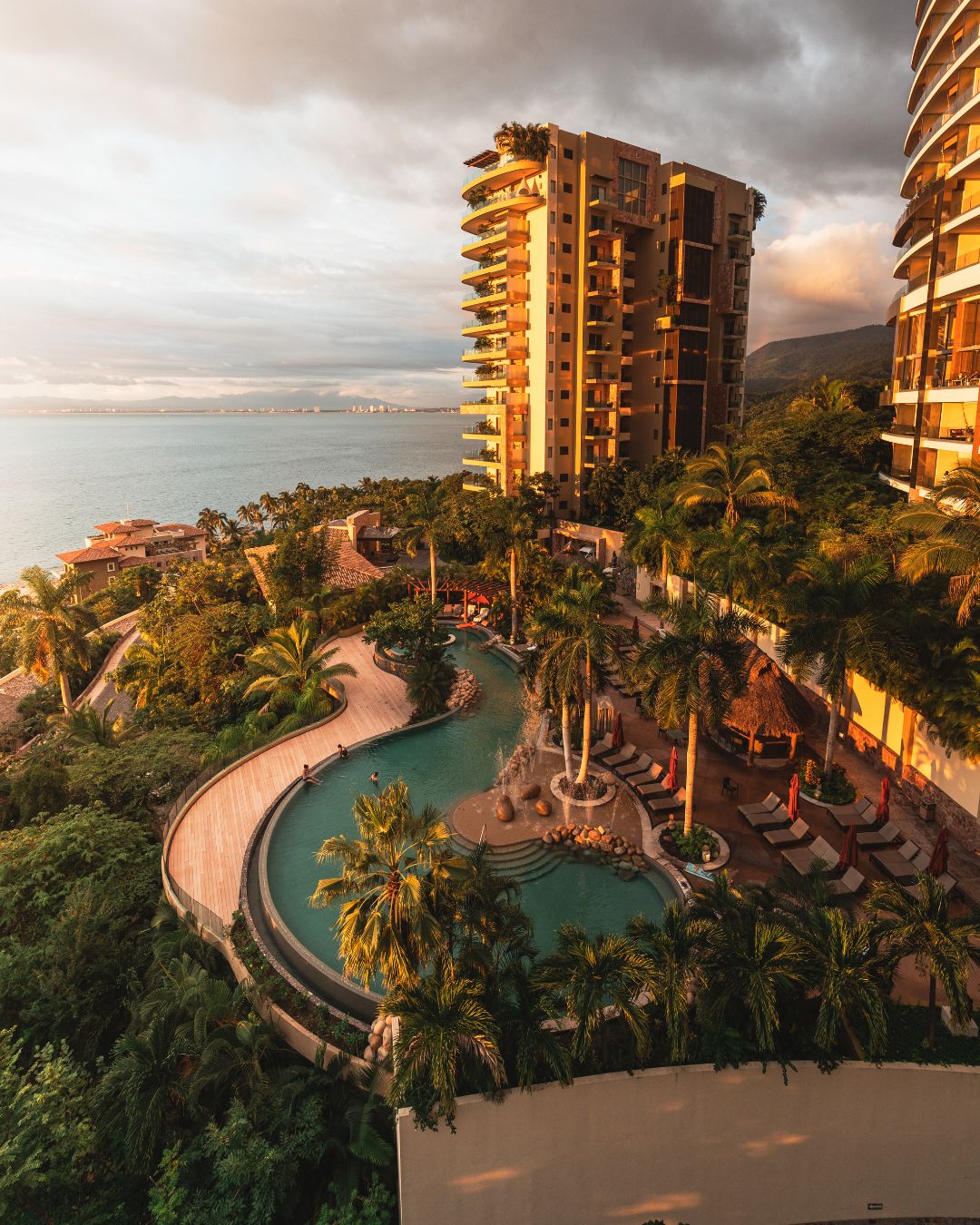
Kids Club • World-class Spa • 3 Gourmet on-site restaurants

Fitness Center • Gift Shop • Outdoor Pool • etc

Free WiFi• Swimming Pool • Gym • etc

Free WiFi• Swimming Pool • Gym • etc

Free WiFi• Swimming Pool • Gym • etc



